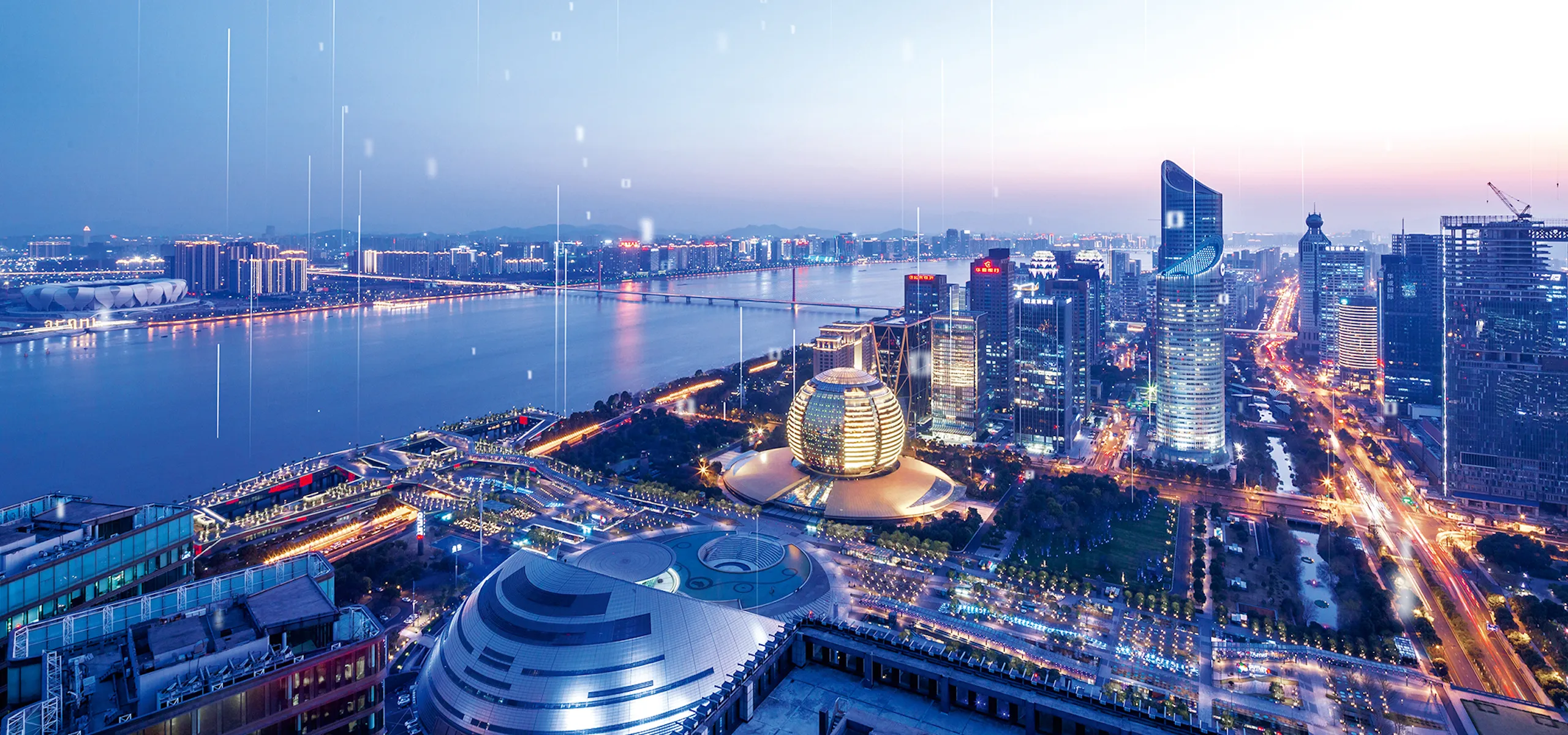China’s smart cities are yet to truly transform urban life
Ten years since China launched 90 pilot “smart cities,” the technologically advanced, AI-powered, efficiently and digitally governed metropolitan utopias that technology companies and local governments promised are mostly yet to materialize.
Millions of yuan have been pumped into an estimated 800 smart city projects since then, but though there are more cameras with more digital functionality than ever, 5G coverage is almost everywhere, and many government services have gone online, most Chinese cities still suffer from the same problems as cities around the world: bad traffic, packed public transport, growing inequality, and environmental degradation.
This is not for a lack of cash or digital infrastructure. Alibaba’s “City Brain” project in Hangzhou, where the company is headquartered, uses AI to help optimize traffic systems, ensure quicker response times by ambulances, and automatically monitor traffic violations. DiDi Chuxing, on the other hand, has launched self-driving vehicle pilot projects in Shanghai and Changsha. Shenzhen became the first city to pilot the People’s Bank of China’s digital Renminbi in 2020. Accounting firm Deloitte estimates investment in smart cities in China amounts to 25.9 billion US dollars up to 2018, and predicts that that will rise to 40 billion by 2023. China is responsible for over half of the world’s smart city projects, yet according to the 2019 Global Smart City Index, only two mainland Chinese cities are in the top 100 for their “smartness”: Shanghai (at 93rd) and Beijing (99th).
Lack of long-term planning and a focus on flashy tech over more practical solutions are part of the problem. In a 2021 study of smart cities, researchers at Peking University, Lanzhou University, and the Zhejiang Academy of Commerce found that Chinese smart cities scored well for “smart governance,” which includes things like public security and online government services, but lowest on “smart environment” and “smart economy” metrics. They argued that “technocentrism” driven by technology firms responsible for building the smart cities, and local governments who blindly recruit them and follow their plans, “does not pay enough attention to people-oriented application services.” Instead, it focuses on transportation, energy, and infrastructure at the expense of healthcare and residents’ needs like clean water, air, and food.
Some have accused local governments of rushing into contracts with big technology firms without proper strategies for how digitalization, AI, and the Internet of Things can be practically employed to improve the standard of living. Many of these technologies rely on massive amounts of data collected from residents, yet due to a lack of standard rules for data storing, different government bureaus often have trouble sharing information. Smart city plans have also been accused of a copy-and-paste approach which fails to consider the unique needs and advantages of different cities. Meanwhile, others worry that smart cities focus too much on high-cost technologies that will exclude those on low incomes, worsening the digital divide between rich and poor, and between rural and urban residents.
Building a new city from scratch might seem like an attractive alternative to tackling engrained problems in big cities like Beijing and Shanghai. Xiong’an, a new smart city in Hebei province that has been under construction since 2017, is meant to become a model of smart, green, efficient urban life by 2035. So far, ecological projects have expanded vegetation coverage in two districts of the city by around 30 percent, according to a 2020 study. A new high-speed railway connection to Beijing and Tianjin, and a new station, have been built at a cost of around 33 billion yuan.
Yet for now, most of Xiong’an remains a construction site, populated mainly with low-skilled workers and farmers. If it is to be a high-tech hub near the capital, then how, or even whether, these people fit in is still a puzzle. China’s smart cities will need to become smarter at allocating resources to be deemed a success.
New Cities, Old Problems is a story from our issue, “The Data Age.” To read the entire issue, become a subscriber and receive the full magazine.












